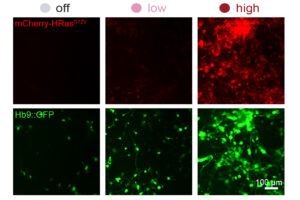
A groundbreaking method developed at the University of Warwick introduces a simple and predictive way to calculate the movement of irregularly shaped nanoparticles, a particularly hazardous class of airborne pollutants. This development, spearheaded by Professor Duncan Lockerby, promises to enhance our understanding of air pollution and its health impacts.
Every day, people inhale millions of microscopic particles, such as soot, dust, pollen, microplastics, viruses, and synthetic nanoparticles. These particles can penetrate deep into the lungs and enter the bloodstream, potentially leading to serious health conditions like heart disease, stroke, and cancer. Despite their irregular shapes, existing mathematical models assume these particles are perfect spheres, simplifying calculations but limiting accuracy. This assumption hinders the ability to accurately predict the behavior of real-world, non-spherical particles, which are often more dangerous.
Revolutionizing Aerosol Science
Professor Lockerby’s research, published in the Journal of Fluid Mechanics Rapids, offers the first straightforward method to predict the motion of irregular particles of any shape. By revisiting a century-old formula, the study addresses a critical gap in aerosol science. The new approach builds on the Cunningham correction factor, a cornerstone of aerosol science developed in 1910 to predict how drag on tiny particles deviates from classical fluid laws.
In the 1920s, Nobel laureate Robert Millikan refined this formula, but in doing so, he overlooked a simpler, more general correction. Consequently, the modern version remained limited to perfectly spherical particles. Professor Lockerby’s work reformulates Cunningham’s original idea into a more general and elegant form, introducing a “correction tensor” that captures the full range of drag and resistance forces acting on particles of any shape, from spheres to thin discs, without relying on empirical fitting parameters.
“The motivation was simple: if we can accurately predict how particles of any shape move, we can significantly improve models for air pollution, disease transmission, and even atmospheric chemistry,” stated Professor Duncan Lockerby, School of Engineering, University of Warwick.
Implications for Environmental Health
This breakthrough provides the first framework to accurately predict how non-spherical particles travel through the air, marking a significant advancement for both environmental health and aerosol science. The new model lays a more robust foundation for understanding airborne particle movement across various fields, from air quality and climate modeling to nanotechnology and medicine.
By improving predictions of how pollutants spread through cities, how volcanic ash or wildfire smoke travels, and how engineered nanoparticles behave in manufacturing and drug delivery systems, this method could have far-reaching implications. To capitalize on this advancement, Warwick’s School of Engineering has invested in a new state-of-the-art aerosol generation system. This facility will enable researchers to generate and study a broader range of real-world, non-spherical particulates, further validating and extending the new method.
“This new facility will allow us to explore how real-world airborne particles behave under controlled conditions, helping translate this theoretical breakthrough into practical environmental tools,” commented Professor Julian Gardner, School of Engineering, University of Warwick.
Looking Ahead
The introduction of this innovative model represents a pivotal moment in the study of airborne pollutants. As researchers continue to explore its applications, the potential for improved environmental health outcomes becomes increasingly tangible. The ability to accurately predict the movement of irregularly shaped nanoparticles could lead to better public health strategies and more effective pollution control measures.
As the University of Warwick continues to lead in this field, the collaboration between theoretical advancements and practical applications will likely yield significant benefits for both science and society. The ongoing research and development efforts underscore the importance of bridging historical scientific insights with modern technological capabilities to address contemporary environmental challenges.






